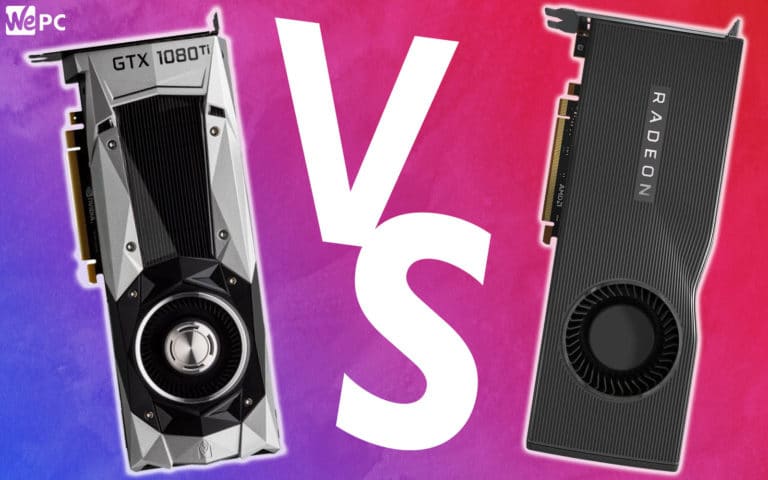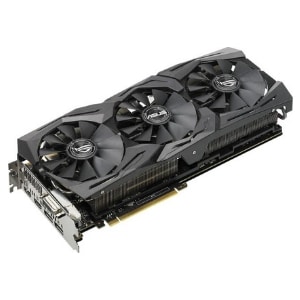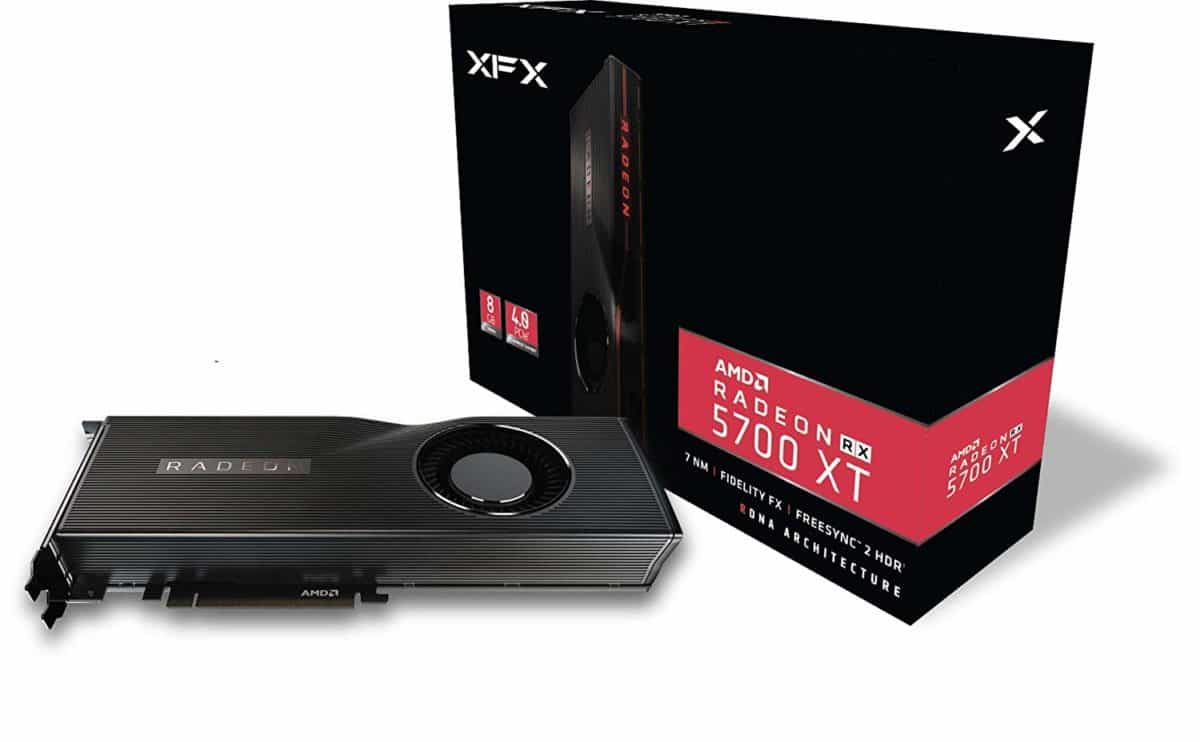Nvidia GTX 1080 Ti vs AMD RX 5700 XT
We look a bit further back in time to these trusted old GPU warhorses

Nvidia GTX 1080 Ti vs AMD RX 5700 XT
When it comes to graphics card processors, there are a few companies in the current market you should consider. Two of the leading companies are Nvidia and AMD.
In this article, we will be focusing specifically on two GPUs these companies have created, the Nvidia GTX 1080 Ti and the AMD RX 5700 XT.
We will be talking you through all the specifications you should look for in a good graphics card, such as VRAM, architecture, and fps, to find out which is the better option.
AMD/Nvidia
If you are new to the gaming world, you may be unfamiliar with AMD and Nvidia. These companies are two of the leading creators when it comes to graphics cards.
While AMD is more commonly known for their CPUs, they have drastically improved their GPU game. While they previously lagged behind Nvidia, in recent years they have closed the gap in the market.
If you are looking for a great low to mid-range graphics card, AMD has some fantastic models. However, Nvidia’s products should not be discredited. Nvidia being the pioneer of the graphics card knows how to create great components.
When looking at the top of the range graphics cards, Nvidia is hard to challenge. Their constant research and futureproofing developments make for fantastic spec GPUs.
In this article, we will be pitting these two companies against each other, to see which of these older graphics cards is the better of the two. We will be comparing all of the specifications to gain a fuller understanding of which is better.
Architecture
Let’s take a look at the clock speeds for each GPU:
Nvidia GTX 1080 Ti
- Base Clock – 1481MHz
- Boost Clock – 1600MHz
AMD RX 5700 XT
- Base Clock – 1605MHz
- Boost Clock – 1905MHz
The Nvidia GTX 1080 Ti is Nvidia’s flagship series 10 model. It uses Nvidia Pascal architecture, which is one of the best GPU architectures on the market currently. It provides 3X better performance when compared to Nvidia’s older GPU. It supports next-gen VR.
Nvidia Pascal provides some of the fastest gaming experiences and supports DirectX 12. The power efficiency is particularly good and is far better than previous architecture.
The AMD RX 5700 XT uses AMD RDNA Architecture. When looking at previous AMD models, this is a huge advancement. RDNA supports next-gen gaming. It provides 1.25 performance per clock in comparison to their older 14nm models.
Its power efficiency is good and AMD has excelled with this GPU. This architecture is a huge leap in the correct direction for the company and pulls them far closer to Nvidia. It is VR ready, The performance per watt is 1.5 x better than its predecessors.
Cooling
The Nvidia GTX 1080 Ti has cooling vents to help the circulation of air enter and leave the GPU. This will help to prevent the card from overheating. However, this will only facilitate the recommended maximum GPU temperature, which is 91℃.
If you are looking to overclock this graphics card, we would recommend purchasing an additional cooling system. This will help to keep your GPU from overheating when overclocked.
The overall power consumption of the Nvidia GTX 1080 Ti is 250W, in comparison to the AMD RX 5700 XT, which is 225W. When comparing the TDP, while it is slightly higher for the 1080 Ti, the 5700 XT, is not significantly lower. The lower total TDP of the 5700 XT, is an advantage if you are looking to overclock. The AMD RX 5700 XT only uses a blower cooling system, similar to the 1080 Ti.
Dimensions
The dimensions of your GPU is worth considering as you will want to ensure that it is the correct fit for your build.
Here are the dimension specs for each GPU:
Nvidia GTX 1080 Ti:
- Length – 10.5”
- Width – 2-Slot
AMD RX 5700 XT
- Length – 10.7”
- Width – 2-slot
There is very little difference between these graphics cards. However, if you are looking for a slightly smaller graphics card, the Nvidia GTX 1080 Ti may be the better option.
They both use two slots and the power connection required is 1x 6-pin and 1 x 8-pin.
When looking at the PCIe interface, AMD GPU trumps the Nvidia. The AMD uses PCIe 4.0 x16, whereas the Nvidia uses PCIe 3.0 x16. If you are looking for the best and most current interface, choose the AMD GPU. While PCIe 3.0 is great, PCIe 4.0 boasts increased bandwidth which is better for future-proofing purposes.
Resolutions/FPS
The resolutions and fps of your GPU are important, especially if you are looking to future proof and want your graphics card to reflect the resolution of a 4K monitor.
The maximum resolution for the Nvidia GTX 1080 Ti is 7680×4320 and for the AMD RX 5700 XT, it is 1440p. However, they both can run 4K if you prefer to play at this resolution.
When looking at the fps benchmarks, it is a fairly even playing field. The GTX 1080 ti had better fps for Minecraft when tested at 1080p, with 250fps, in comparison to RX 5700 XT’s 215fps. When looking at GTA V, the AMD GPU was 10% better overall with 117fps at 1080p, in comparison to Nvidia’s 102fps.
When looking at the overall performance, the Nvidia still comes out on top, with a 28% higher fps. When looking at its MRender, it was 16% better. While this is not a huge gap, it will still make a difference to your gameplay. The MRender is 134 fps for the GTX 1080 Ti and 116 fps for the RX 5700 XT.
Ray tracing?
Ray tracing is important if you want to get the most out of your GPU when it comes to lighting and shading in-game.
If ray tracing is something you want from your graphics card, we would recommend choosing the Nvidia GTX 1080 Ti.
The AMD RX 5700 XT does not use ray tracing even though it is the newer model of GPU. However, the lighting produced in the game is still great.
If you play games such as Call of Duty, Battlefield V, and Metro Exodus, ray tracing is certainly worth considering.
VRAM
The VRAM of your GPU is important. It allows your GPU to render graphics more effectively. It is particularly important if you play AAA games.
For modern titles it’s recommended to have at least 6GB running 1080p resolution on high graphics. If you are planning to game at a 1440p resolution, expect games to demand between 8GB and 12GB of VRAM.
The Nvidia GTX 1080 Ti is equipped with 11GB GDDR5X and the AMD RX 5700 XT, it is equipped with 8GB GDDR6 VRAM. When looking at the Memory speed, the AMD is slightly better with 14Gbps, in comparison the Nvidia’s 11Gbps.
The video memory used for the Nvidia GPU is of a lower spec in comparison to the AMD. Nvidia uses GDDR5X, whereas this AMD GPU uses GDDR6. As it is a newer model and features the most up to date memory specs, the AMD card is better when it comes to future-proofing.
Conclusion
It is difficult to decide which is the better GPU as they both have their strengths and weaknesses. Overall, Nvidia performed a lot better when benchmarked, and the fps were better. However, AMD was close behind. In some of the games, the AMD card fared better.
When looking at futureproofing, the AMD graphics card is a much newer model in comparison to the Nvidia, and this is reflected in the 1440p resolution and GDDR6.
Both architecture fairs well and AMD certainly has closed the gap with Nvidia through this GPU. If you are looking for a cheaper option, the Nvidia is an older model and is the cheaper of the two. The AMD is significantly more expensive.






